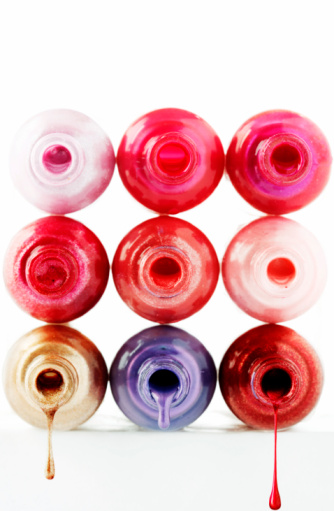 You likely give little thought to some basic concerns regarding nail polish when you head to the salon for a manicure. All the same, it is well worth considering the basics of how nail polish works and what products and chemicals combine to provide its long-lasting and colorful shine. Even the process of making quality nail polish is a fascinating look into how chemistry comes into play in cosmetics.
You likely give little thought to some basic concerns regarding nail polish when you head to the salon for a manicure. All the same, it is well worth considering the basics of how nail polish works and what products and chemicals combine to provide its long-lasting and colorful shine. Even the process of making quality nail polish is a fascinating look into how chemistry comes into play in cosmetics.
Polish is essentially a solvent. Its purpose is to enhance the look of nails by adding a splash of color. Nail polish is suitable for wear on fingernails or toenails. You can even apply matching or contrasting colors to both at the same time. Polish has been in use since approximately 3000 B.C. with its origins in China. The original Chinese formula for nail polish is believed to have been comprised of gum Arabic, gelatin and beeswax with mashed flowers added for coloring. Ancient Egyptians also made use of nail polish as a way to transparently indicate an individual’s social standing and status.
In time since, the formulation of nail color has changed with the intent to add not just color but shine as well. Today, polish is available in almost innumerable colors and finishes, ranging from clear shine to metallic blue and everything in between. Colors range across the spectrum, and while some people select shades to complement their skin tone or wardrobe, others select a favorite color simply to make a personal statement. Some polishes even incorporate glitter for an extra dash of sparkle. By using different colors, or painting unique designs on nails, manicures have become a means of artistic expression. Additionally, as formulas continue to evolve, manufacturers continue developing new polishes that will strengthen nails or promote faster nail growth.
Still, proper nail care and grooming involves more than simply applying nail color. Your nails, particularly your fingernails, are highly visible, and as such, you should strive to keep them looking their best with or without polish. Well-maintained nails will give you younger, healthier looking hands and their youthful appearance will boost your confidence each time you greet a new person with a handshake. Properly prepping your nails for color involves taking a few key steps.
- Keep your nails neatly, cleanly trimmed. Ideally, you want your nails to extend approximately one quarter of an inch past the tips of your fingers. Longer nails can become brittle and are more prone to cracks or breakage.
- Resist the urge to trim your cuticles. Their function is to protect your nails and your nail beds from damage. When cut, they are likely to grow back thicker than before and they are also prone to infection. Instead, use a special wooden cuticle stick to push them away from the nail without cutting.
- Apply a moisturizing hand cream to your hands on a regular basis, at least daily. Focus on your cuticles if they tend to be tough or thick.
- Your fingernails are not utility knives. Using your nails to scratch, puncture, or twist objects can cause breaking and damage.
- If you bite your nails, train yourself to stop.
- Wear gloves when you are working with drying or abrasive chemicals such as acetone or alcohol. Do not use these substances to remove polish, either. Exposure will weaken your nails over time.
Comments on this entry are closed.